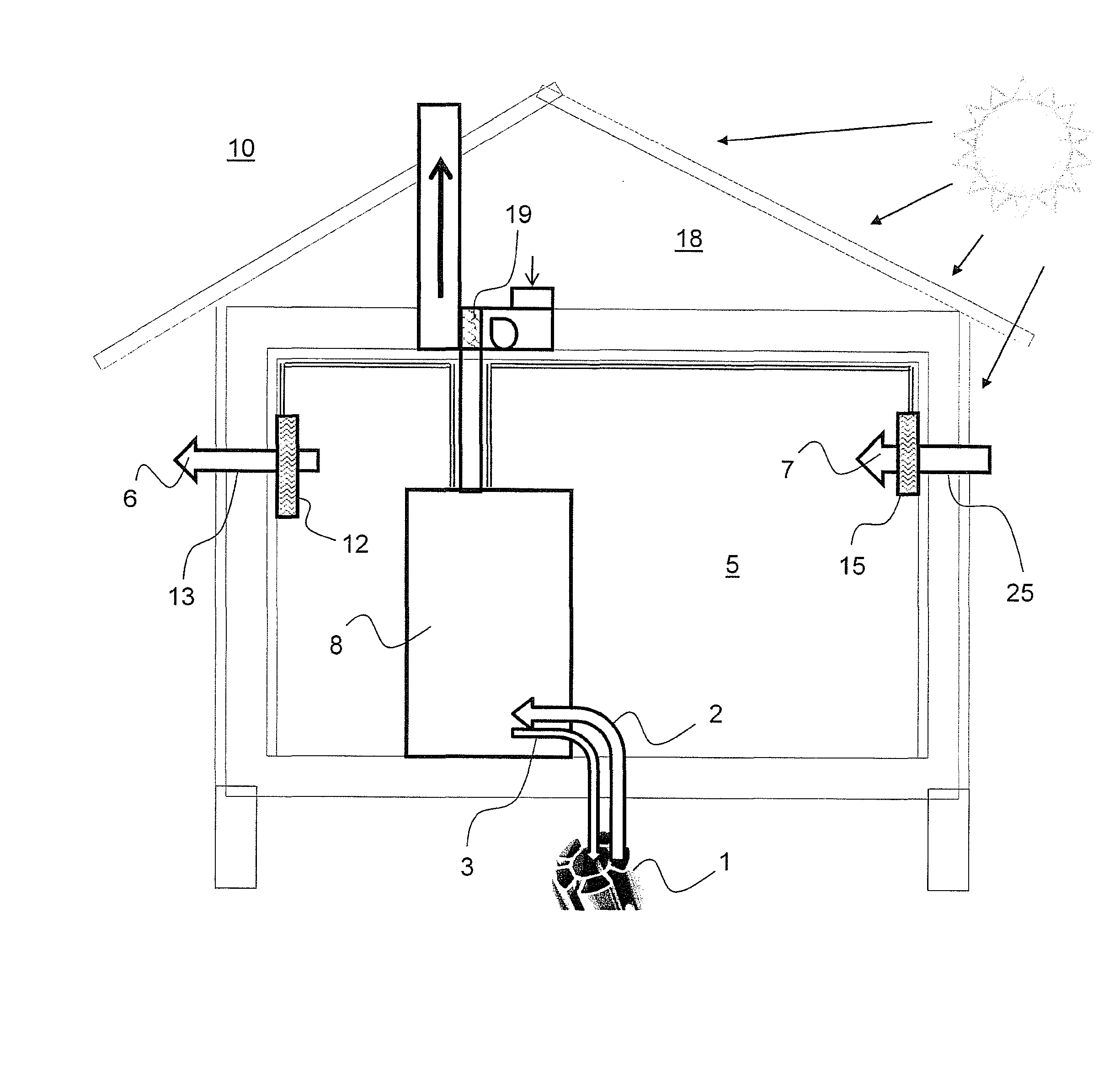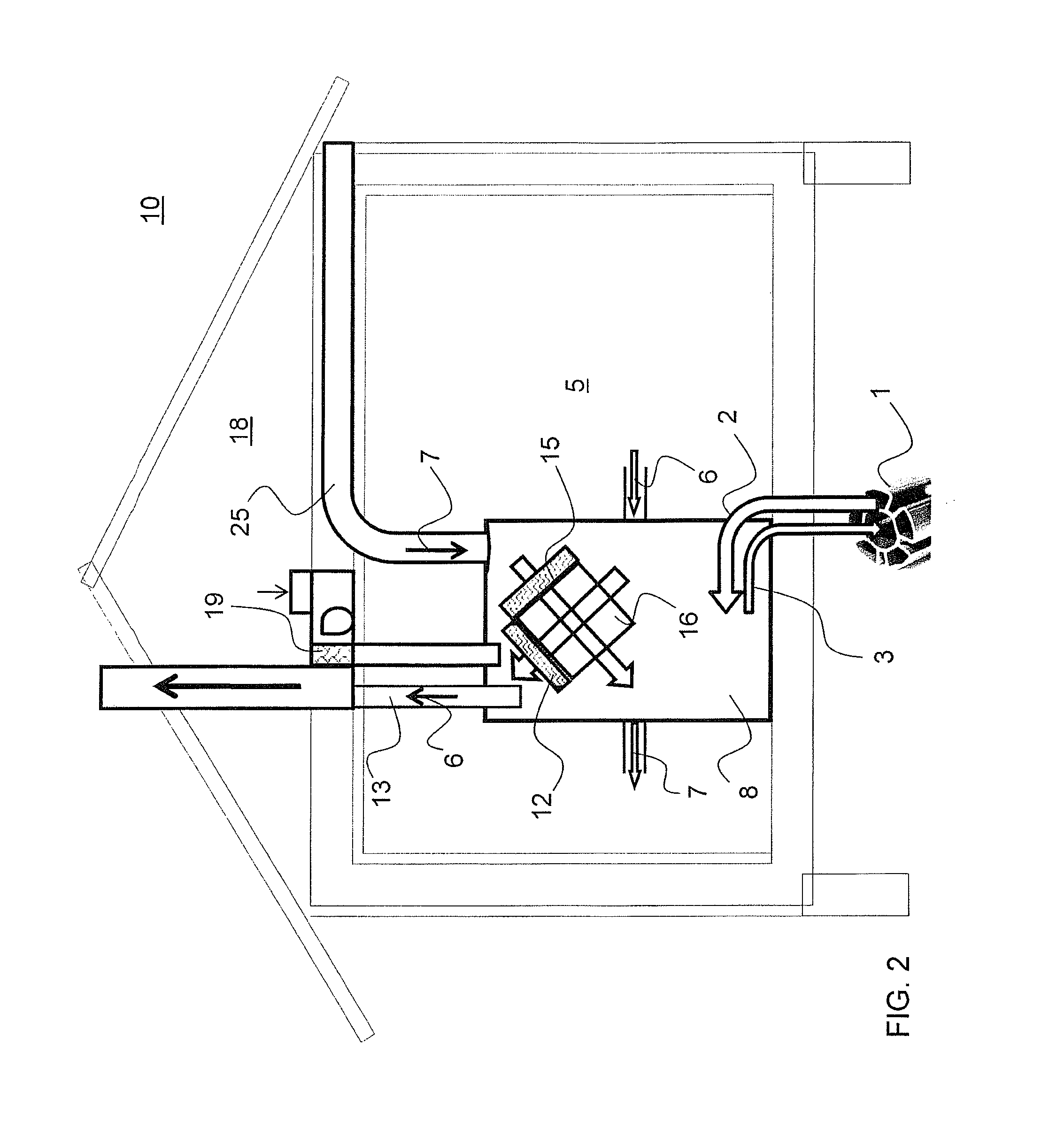Method and arrangement for using low-energy source for controlling air temperature in room space
a low-energy source and air temperature technology, applied in lighting and heating apparatus, instruments, heating types, etc., can solve the problems of limited ability of a conventional air-source heat pump to transfer heat energy from the outside air to the room space or a water accumulator, and few solutions have managed to utilise several energy sources. , to achieve the effect of reducing the humidity of the inside air and reducing the consumption of electricity
- Summary
- Abstract
- Description
- Claims
- Application Information
AI Technical Summary
Benefits of technology
Problems solved by technology
Method used
Image
Examples
second embodiment
[0039]This second embodiment of the method may also be implemented in such a manner that the flow of heat transfer liquid supplied from the extraction circuit 1 is divided into two or more paths of the supply circuit 2. In this manner, the rate of the heat transfer liquid circulating in the heat source can be doubled or multiplied without having to have larger heat collection and releasing devices in the extraction circuit. The heat transfer liquid circulated by the extraction circuit pump 4 is thus distributed to two or more transfer pipes when it comes from the heat source to the supply circuit. In this case, the liquid radiator 12 recovering the heat from the flow of air 6 to be removed from the room space and the heating circuit 14 of the accumulator 9 of the heat exchanger means 8 are two separate flow circuits in the arrangement according to the method.
[0040]In the embodiment of FIG. 4, for instance, the heat energy transferred from the flow of air 6 to be removed from the roo...
third embodiment
[0042]In the present arrangement according to FIGS. 5 and 6, heat energy is recovered from the additional energy source 17 by, for example, supplying air flow 20 by means of a blower 21 from, in this embodiment, the attic of the building to a preferably insulated duct 22 and the above-described liquid radiator 19 therein that circulates the heat transfer liquid. In this procedure, the blower leading the air flow is preferably heat-regulated in such a manner that it operates with full power when the temperature of the air flowing in the duct and supplied from the attic is above +5° C., and the power becomes constantly lower until the air temperature is −10° C., at which point the blower stops. When the blower stops, a damper 23 mounted in the duct 22 blocks the flow route and prevents the air flow from causing the freezing of the heat transfer liquid in the liquid radiator 19 of the duct.
[0043]When, on the other hand, the temperature of the liquid radiator 19 in the duct 22, circulat...
PUM
 Login to View More
Login to View More Abstract
Description
Claims
Application Information
 Login to View More
Login to View More - R&D
- Intellectual Property
- Life Sciences
- Materials
- Tech Scout
- Unparalleled Data Quality
- Higher Quality Content
- 60% Fewer Hallucinations
Browse by: Latest US Patents, China's latest patents, Technical Efficacy Thesaurus, Application Domain, Technology Topic, Popular Technical Reports.
© 2025 PatSnap. All rights reserved.Legal|Privacy policy|Modern Slavery Act Transparency Statement|Sitemap|About US| Contact US: help@patsnap.com



